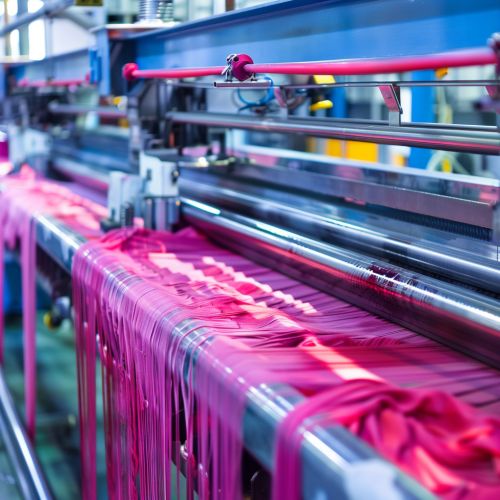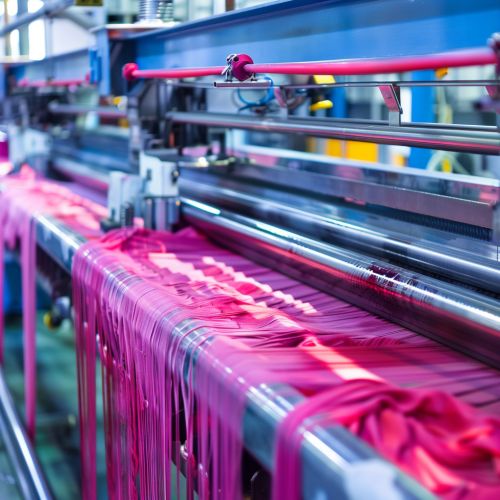Jet Dyeing Machine
Introduction
A Jet Dyeing Machine is a sophisticated piece of textile machinery used primarily in the dyeing process of fabrics. This machine is specifically designed to handle delicate and lightweight fabrics, ensuring uniform dyeing while minimizing fabric damage. Jet dyeing machines are integral in the textile industry due to their efficiency, versatility, and ability to produce high-quality dyed fabrics.
History and Development
The development of jet dyeing machines can be traced back to the mid-20th century when the textile industry sought more efficient and gentle methods for dyeing delicate fabrics. Traditional dyeing methods often resulted in uneven dyeing and fabric damage. The introduction of jet dyeing machines revolutionized the industry by providing a solution that combined high-speed dyeing with gentle fabric handling.
Working Principle
Jet dyeing machines operate on the principle of using a high-velocity jet of dye liquor to circulate the fabric. The fabric is continuously moved through the dye bath by the force of the jet, ensuring thorough and even dye penetration. The key components of a jet dyeing machine include the dyeing vessel, jet nozzle, fabric transport system, and control systems.
Dyeing Vessel
The dyeing vessel is the main chamber where the dyeing process takes place. It is typically made of stainless steel to resist corrosion and withstand high temperatures and pressures. The vessel is designed to accommodate the fabric in a relaxed state, allowing for free movement and uniform dyeing.
Jet Nozzle
The jet nozzle is a critical component that generates the high-velocity jet of dye liquor. The nozzle's design ensures that the dye liquor is evenly distributed across the fabric, promoting uniform dyeing. The nozzle's velocity can be adjusted to suit different types of fabrics and dyeing requirements.
Fabric Transport System
The fabric transport system consists of rollers and guides that move the fabric through the dyeing vessel. This system ensures that the fabric is continuously exposed to the dye liquor, enhancing dye penetration and uniformity. The transport system is designed to handle delicate fabrics gently, minimizing the risk of damage.
Control Systems
Modern jet dyeing machines are equipped with advanced control systems that monitor and regulate various parameters such as temperature, pressure, dye liquor flow rate, and fabric speed. These control systems ensure precise and consistent dyeing results, improving the overall efficiency and quality of the dyeing process.
Types of Jet Dyeing Machines
Jet dyeing machines come in various configurations, each designed to cater to specific dyeing requirements. The main types include:
Soft Flow Jet Dyeing Machine
Soft flow jet dyeing machines are designed for dyeing lightweight and delicate fabrics. They use a gentle flow of dye liquor to move the fabric, reducing the risk of fabric damage. These machines are ideal for dyeing fabrics such as silk, chiffon, and lightweight polyester.
High-Temperature Jet Dyeing Machine
High-temperature jet dyeing machines are used for dyeing synthetic fabrics that require high-temperature dyeing conditions. These machines can operate at temperatures up to 140°C, ensuring thorough dye penetration and fixation. They are commonly used for dyeing polyester and nylon fabrics.
Airflow Jet Dyeing Machine
Airflow jet dyeing machines use a combination of air and dye liquor to move the fabric through the dyeing vessel. This method reduces water and energy consumption, making it an environmentally friendly option. Airflow jet dyeing machines are suitable for a wide range of fabrics, including cotton, polyester, and blends.


Advantages of Jet Dyeing Machines
Jet dyeing machines offer several advantages over traditional dyeing methods, making them a preferred choice in the textile industry.
Uniform Dyeing
The high-velocity jet of dye liquor ensures even distribution of dye across the fabric, resulting in uniform dyeing. This is particularly important for fabrics that require consistent color quality.
Gentle Fabric Handling
Jet dyeing machines are designed to handle delicate fabrics gently, reducing the risk of damage. The continuous movement of fabric through the dye bath prevents creasing and abrasion.
High Efficiency
Jet dyeing machines are highly efficient, capable of processing large volumes of fabric in a relatively short time. This increases productivity and reduces production costs.
Versatility
These machines can be used to dye a wide range of fabrics, from lightweight silks to heavy polyester blends. The ability to adjust parameters such as temperature and dye liquor flow rate makes them versatile and adaptable to different dyeing requirements.
Environmental Benefits
Modern jet dyeing machines are designed to minimize water and energy consumption, making them more environmentally friendly compared to traditional dyeing methods. The use of advanced control systems also reduces the amount of dye and chemicals required, further reducing environmental impact.
Applications
Jet dyeing machines are used in various applications within the textile industry, including:
Apparel
Jet dyeing machines are widely used in the apparel industry for dyeing fabrics used in clothing. The ability to achieve uniform and high-quality dyeing makes them ideal for producing garments with consistent color and finish.
Home Textiles
These machines are also used in the production of home textiles such as bed linens, curtains, and upholstery fabrics. The versatility of jet dyeing machines allows for the dyeing of a wide range of fabrics used in home furnishings.
Technical Textiles
Jet dyeing machines are employed in the dyeing of technical textiles, which are used in various industrial applications. These include fabrics used in automotive interiors, medical textiles, and protective clothing.
Maintenance and Troubleshooting
Proper maintenance and troubleshooting are essential to ensure the optimal performance and longevity of jet dyeing machines.
Regular Maintenance
Regular maintenance includes cleaning the dyeing vessel, jet nozzle, and fabric transport system to prevent the buildup of dye residues and contaminants. Lubricating moving parts and inspecting control systems for any signs of wear or malfunction are also important.
Troubleshooting Common Issues
Common issues that may arise during the operation of jet dyeing machines include uneven dyeing, fabric damage, and machine malfunctions. Troubleshooting these issues involves checking the dye liquor flow rate, adjusting the jet nozzle velocity, and inspecting the fabric transport system for any obstructions or damage.
Future Trends
The future of jet dyeing machines is likely to be influenced by advancements in technology and increasing environmental concerns. Trends include:
Automation
The integration of automation and digital control systems is expected to enhance the efficiency and precision of jet dyeing machines. Automated systems can monitor and adjust dyeing parameters in real-time, reducing the need for manual intervention.
Sustainable Dyeing
There is a growing emphasis on sustainable dyeing practices, and future jet dyeing machines are likely to incorporate features that reduce water and energy consumption. The development of eco-friendly dyes and chemicals will also play a significant role in promoting sustainable dyeing.
Smart Textiles
The rise of smart textiles, which incorporate electronic components and sensors, may lead to the development of specialized jet dyeing machines capable of dyeing these advanced fabrics. This will require innovations in dyeing techniques and machine design to accommodate the unique properties of smart textiles.
Conclusion
Jet dyeing machines have revolutionized the textile industry by providing an efficient, versatile, and environmentally friendly method for dyeing fabrics. Their ability to handle delicate fabrics gently and produce uniform dyeing results makes them an indispensable tool in modern textile manufacturing. As technology continues to advance, jet dyeing machines are expected to evolve, incorporating automation and sustainable practices to meet the demands of the future.
